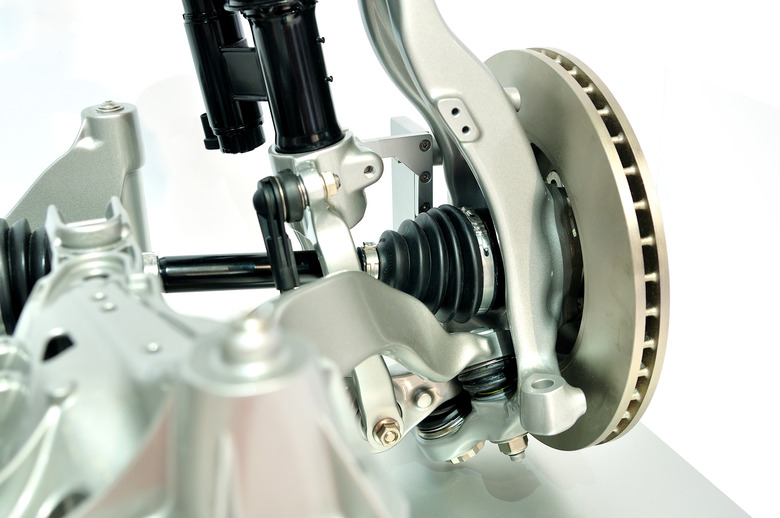Examples Of Wheel & Axle Simple Machines
Regardless of their complexity, all machines utilize some or all the components of simple machines to function. A child's red wagon offers an excellent example of a wheel-and-axle simple machine. Simple machines are mechanical devices that apply a force and include a lever, inclined plane, wheel and axle, screw, wedge and pulley. With little moving parts, these simple machines make life much easier when you require help working on a project. When combined, they create complex machines with many moving parts.
TL;DR (Too Long; Didn't Read)
Wheel-and-axle simple machines typically have moving parts: an axle and a wheel. Some examples of these types of simple machines include:
**Winches**: Commonly found on top of a well with an axle, a bracket and a handle. The line wraps around the axle as the handle is turned drawing the bucket of water dipped in the well to the surface.
**Wagon, Buggy and Carriage Axles**: Axles attached to wheels spin as the buggy or wagon moves across the ground either by pulling it or being drawn by horses, mules, donkeys or oxen.
**Capstan:** Sailors use the capstan, a cylinder that revolves on a vertical axis, to wind the anchor line or other lines and cables on a ship.
**Spinning Wheel**: First used in India between 500 and 1000 A.D., women typically turned wool fibers into yarn using the spinning wheel, a simple machine consisting of axles and wheels.
**Clocks**: Clocks use an axle and a wheel to tell time, but grandfather clocks also use levers, pulleys, wedges, screws, axles and wheels as a complex machine.
How Simple Machines Work
How Simple Machines Work
Simple machines basically operate by transmitting mechanical labor from one part of the device to another. Simple machines generate force and control its direction and motion but do not make energy. Two factors measure the functioning of a simple machine: it's mechanical advantage and efficiency. Mechanical advantage equals the ratio of the force employed by the machine to the force applied to it. No machine works harder than the force put into it. A simple machine's efficiency is a measurement of the ratio between the work put into it and the work it puts out.
Wheel and Axle Machine Basics
Wheel and Axle Machine Basics
The center of the axle serves as a fulcrum for the wheel. An axle simple machine is essentially an adapted lever, but it moves a load farther than a lever does. When a bar rests on a pivot point, you apply force to one end of the lever. With the fulcrum or pivot point in the right location, it can move the load a few inches or feet. But as a modified lever, the wheel and axle simple machine can move the load across miles, depending on the energy source. The ratio of the radii of the wheel and axle define the ideal mechanical advantage of the device.
Cite This Article
MLA
Brenner, Laurie. "Examples Of Wheel & Axle Simple Machines" sciencing.com, https://www.sciencing.com/examples-wheel-axle-simple-machines-6361024/. 17 April 2018.
APA
Brenner, Laurie. (2018, April 17). Examples Of Wheel & Axle Simple Machines. sciencing.com. Retrieved from https://www.sciencing.com/examples-wheel-axle-simple-machines-6361024/
Chicago
Brenner, Laurie. Examples Of Wheel & Axle Simple Machines last modified March 24, 2022. https://www.sciencing.com/examples-wheel-axle-simple-machines-6361024/
